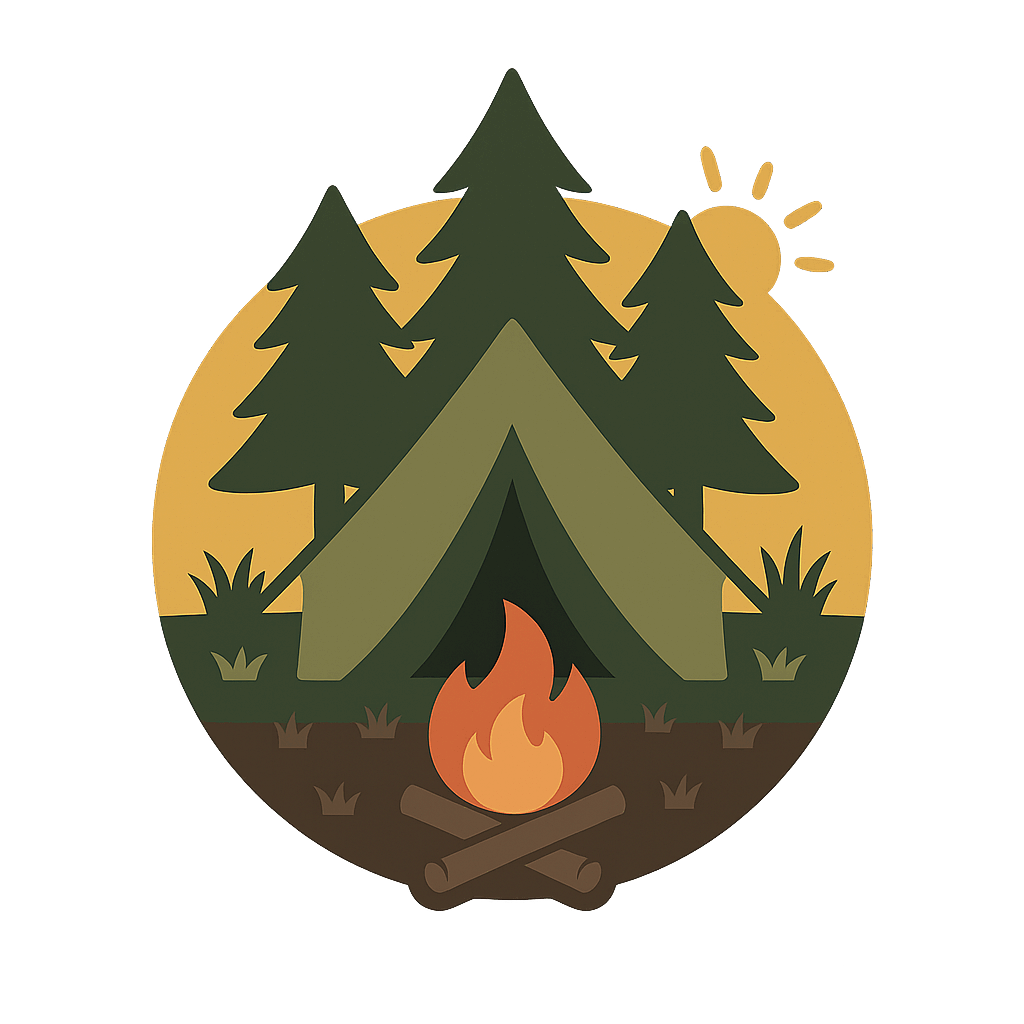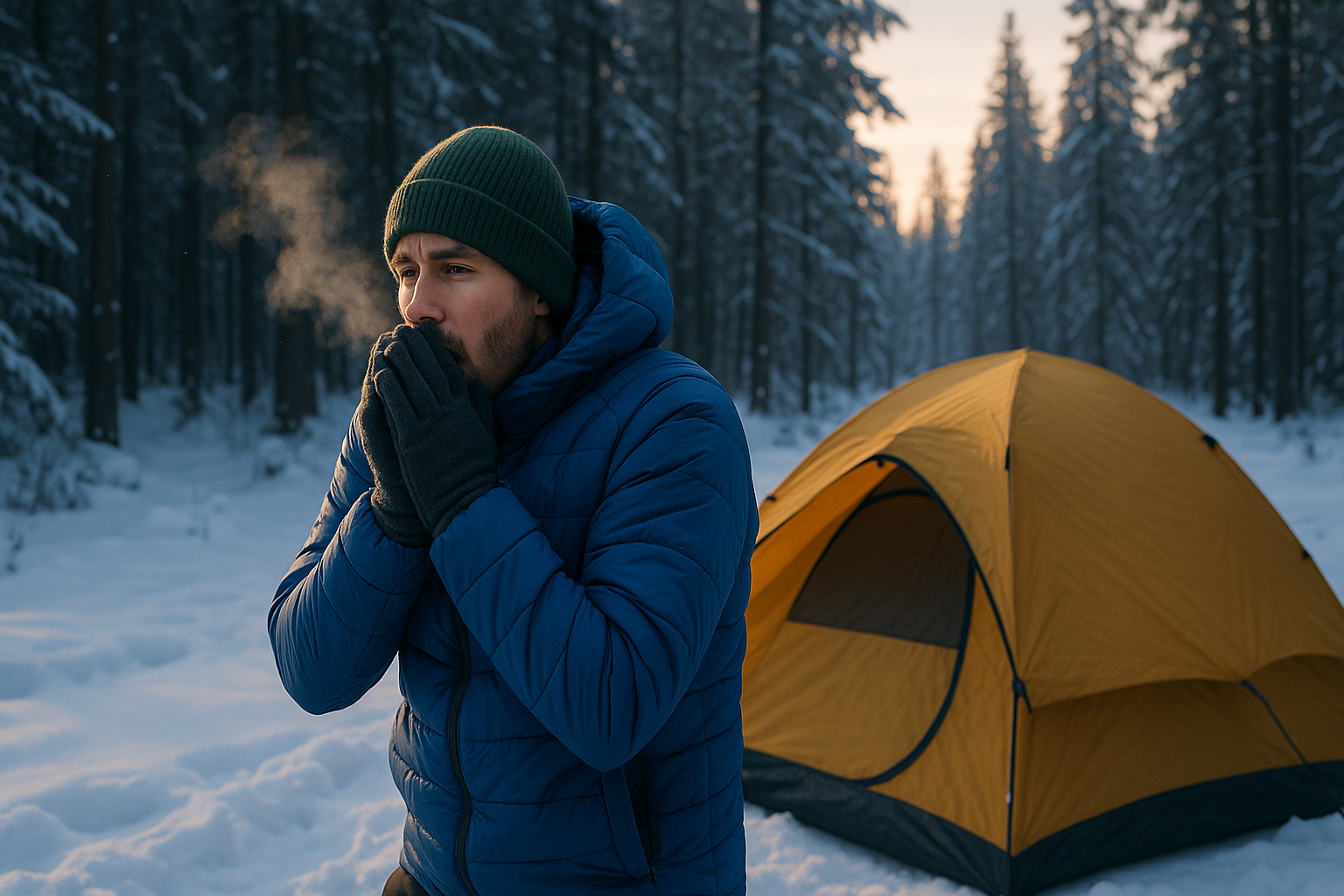You’ve layered your clothes.
You’ve wrapped yourself in a sleeping bag rated for freezing nights.
You’re off the cold ground and even used your warmest socks.
But you’re still freezing — and the cold creeps in with every breath.
Why?
Because you’re exhaling heat into the night air — over and over again.
In sub-zero environments, unprotected breathing is one of the fastest, least-known ways campers lose warmth.
This guide shows you how to prevent that, using field-tested breathing techniques and ultralight gear hacks that don’t weigh down your pack — or leave you gasping in condensation.
🧠 Why Your Breath Is Draining Heat
Your body is a furnace — and every time you exhale, you release:
- Warm, moist air that you spent energy heating
- Water vapor that creates evaporative cooling
- Carbon dioxide that triggers cold air draw-in if unregulated
In cold conditions, this creates three problems:
- You heat the surrounding air instead of yourself
- Condensation forms in your bag or around your face, making you colder
- You breathe in freezing air, which forces your body to work harder to warm it up
In short: You’re warming the wilderness — not yourself.
🚫 What Most Campers Get Wrong
Most campers either:
- Sleep with their face uncovered = massive heat loss
- Pull their bag over their mouth = moisture trap + wet insulation
- Breathe into their jacket = cold breath circulates back onto chest
🔥 None of these work long-term.
You need real airflow — but filtered and buffered for warmth.
✅ 1. Use a Buff or Neck Gaiter as a Breath Filter
A lightweight buff is one of the most effective tools for managing breath loss.
How to use it:
- Pull the buff over your nose and mouth at night
- Sleep on your side to prevent damp buildup
- Tuck the bottom into your base layer to trap rising warmth
This does three things:
- Warms incoming air
- Captures outgoing moisture before it hits your bag
- Prevents frozen nose/lip exposure without smothering you
🧠 Choose a quick-dry synthetic or merino blend — cotton will freeze.
✅ 2. Create a “Breathing Tunnel” with Your Bag or Quilt
If you’re using a mummy bag or down quilt:
- Zip up fully
- Pull the hood drawstring to just below your mouth
- Leave a small opening for air — like a tunnel
- Point your face downward or toward the zipper seam
Why this works:
- Warm exhaled air stays near your chest
- Incoming air has to pass near your warm collar before it enters
- Reduces draft shock
🔥 Never breathe directly into the bag. Moisture will kill your insulation.
✅ 3. Field-Tested “Two-Stage Breathing”
This is a breathing technique, not a gear tip — but it’s powerful.
The technique:
- Inhale gently through your nose
- Hold for 2–3 seconds
- Exhale slowly through pursed lips
This does 3 things:
- Reduces the amount of cold air entering rapidly
- Warms air slightly via nasal passageways
- Slows down respiratory heat loss over time
🧠 It also slows your heart rate — helpful for sleep and conserving energy.
✅ 4. Face Mesh or Mask System (For Ultra-Cold Zones)
When camping in extreme cold (snow caves, alpine ridges, open bivy):
Use a face mesh mask (like a balaclava with breathing vents or a frost mask). These are designed to:
- Warm air before it hits your lungs
- Reduce condensation with ventilation channels
- Cover your entire head, neck, and face with no gaps
Look for:
- ColdAvenger masks (popular with Arctic trekkers)
- Fleece-lined masks with mesh vents (hiking and military-grade options)
Pros:
- Total breath protection in brutal cold
- Stops nosebleeds, coughs, and dry throat overnight
- Can be used while hiking too
Cons:
- Slightly bulkier (4–6 oz)
- May feel restrictive if not fitted well
✅ 5. Breath into a Designated “Sacrificial” Layer
If you must breathe into something — make sure it’s not your sleeping bag.
Use a sacrificial layer like:
- A microfiber towel
- A spare base layer
- A small buff or bandana
Hold or wrap this lightly over your mouth/nose to catch condensation, then hang it to dry next day.
🧠 Never double-use this item for insulation or sleeping after — it’ll stay damp.
🧣 6. Wear a Hooded Base Layer That Channels Exhaled Heat Back Toward Your Core
Most campers sleep with their heads uncovered or in a loose hood. But in sub-freezing conditions, a fitted hooded base layer does more than trap heat — it can redirect your breath.
How It Works:
- Exhale downward into your hood space
- The hood traps that warm air and funnels it down toward your chest
- Creates a passive heat loop that warms your torso without moisture buildup
🧠 This works best with a merino or fleece-lined hooded shirt under your sleeping bag hood.
Bonus: You’ll also eliminate neck drafts and prevent heat loss at one of the body’s highest-radiating points.
🥶 7. Combat “Frozen Nose Syndrome” with a Partial Buff Tuck
One of the most common cold-camping complaints?
“My nose freezes, but if I cover it, I can’t breathe.”
Fix:
- Fold your buff in half horizontally
- Tuck the lower half just below your nose
- Keep the upper half hovering slightly above the nostrils like a wind shield — not a tight mask
This allows:
- Free airflow without suffocation
- Reduced wind impact
- Warmer microclimate around your nose tip
🧠 This trick alone can help you fall asleep faster by relieving cold-face anxiety.
🫁 8. Practice “Low Flow” Respiration While Falling Asleep
In cold camping, you’re not just losing heat through breath — you’re wasting calories generating that heat.
Use this technique during sleep onset:
Low-Flow Breathing (Cold Sleep Mode)
- Breathe in for 4 seconds through the nose
- Hold for 4 seconds
- Exhale gently for 6–8 seconds through slightly parted lips
- Repeat 5–10 times as you relax
Results:
- Slows respiration rate = less warm air lost
- Keeps your body in rest-and-digest mode
- Calms adrenaline spikes that come from being cold
🧠 Bonus: This also improves heart rate variability and sleep depth.
🛏️ 9. Position Your Face Close to Core Heat Without Steaming Up Your Bag
If you can’t handle full mask coverage, use strategic face placement.
Setup:
- Sleep on your side
- Tuck your head forward so your face is 6–8 inches from your chest
- Let your breath warm your collar zone, not the inside of your bag
This reduces:
- Heat loss from exhalation
- Risk of frostbite on nose/lips
- Condensation near sleeping bag baffles
🧠 This is how seasoned mountaineers sleep in minimalist alpine setups — with a “face pocket” that warms with every breath but doesn’t get wet.
🥄 10. Warm Your Breath From the Inside Out: Fat Before Bed
Yes — this is a respiration tactic too.
Why:
When your core body temp drops, your respiration rate increases to compensate — which exposes you to more cold air.
But if you boost internal thermogenesis with slow-burning calories, you:
- Stay warmer longer
- Breathe slower
- Reduce net respiratory heat loss overnight
What to Eat:
- 1 spoon of peanut butter, trail butter, or ghee
- 1 cube of cheese or nut bar
- Small carb-fat combo (like oats with olive oil drizzle)
🧠 It’s not just fuel — it’s your “internal hand-warmer” against overnight breath chill.
⚖️ Lightweight Breathing Protection Kit (Under 5 oz Total)
| Item | Weight |
|---|---|
| Merino wool buff | ~1.5 oz |
| Synthetic balaclava (with vent) | ~2.5 oz |
| Spare microfiber towel or cloth | ~0.8 oz |
Total: ~4.8 oz
Impact: Can reduce sleep-related heat loss by 10–15% in freezing conditions.
🥶 Bonus: Signs Your Breathing Is Making You Colder
Be alert for these nighttime symptoms:
- Dry throat or sore sinuses
- Condensation frost around the neck or bag collar
- Waking up shivering even with good gear
- Burning lungs in sub-zero air
These are signs your body is losing energy through respiration and overworking to keep up.
🧭 Camp Setup Bonus: Don’t Face Into the Wind
Whether in a bivy sack or open tarp, always sleep with your head downwind.
Cold air is heavier — it pools and flows like water.
If you sleep uphill or into airflow:
- You breathe more frigid air
- Drafts keep hitting your face
- Nose and lips dry out
Instead:
- Sleep lower on your pad
- Use backpack or dry bag near head as a wind buffer
- Turn your face slightly down or toward torso for radiant warmth
🌄 Conclusion: Warm Sleep Starts With Smarter Breathing
In survival conditions, every degree counts — and you lose more heat through breath than most campers realize.
You don’t need a furnace to stay alive.
You just need smart gear, good layering, and tactical breathing that works with your body — not against it.
Next time the cold creeps in, don’t just zip up tighter — breathe like your warmth depends on it.
Because it does.

